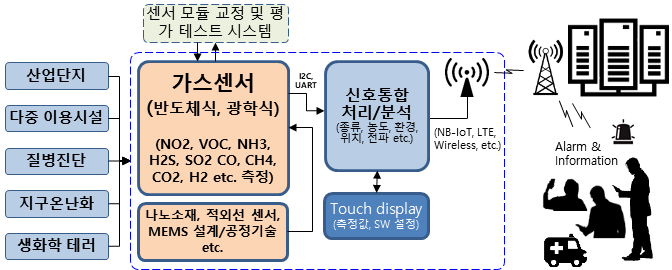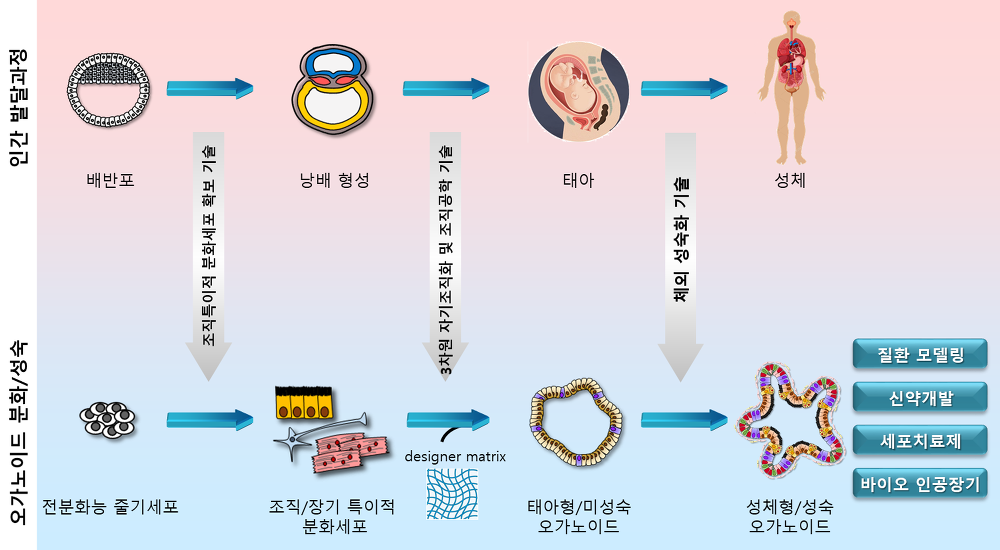AI LIFECARE(Digital BioHealth)
- Biochip
- It is a microchip that integrates biomaterials such as DNA, protein, antibody, and cells on a substrate. It is used to diagnose diseases and develop new drugs because it can quickly analyze a sample to obtain biological information.
- Technical overview
-
Semiconductor and optical gas sensor technology using nano-sensing materials and optical devices that can quickly and accurately measure and monitor information such as gas and harmful factors Using a semiconductor-type gas sensor, it detects and measures gas from breathing or skin and is used for body fat decomposition or disease diagnosis systems It's used for monitoring harmful gases

- Necessity and importance
-
(Markets) The global gas sensor market is expected to grow from $3 billion in 2016 to $3.8 billion in 2021 (CAGR of 4.5%; Source: Frost & Sullivan)
(Policies) Korea is managing harmful substances at the national level through related laws such as the Indoor Air Quality Management Act for Multi-Use Facilities and the Indoor Air Quality Recommendation Standards for New Apartment Houses
- Applications
-
< Gas sensor technology application field >
Areas Description Medical It is used for detecting blood sugar, liver disease, kidney disease, respiratory disease, and virus
It is used to screen diseases of patients in remote islands through remote monitoring
Environments Monitoring indoor and outdoor harmful gases
Monitoring harmful gases in indoor and outdoor multi-use facilities and enclosed areas
Industry Real-time and fixed monitoring system analysis of the Industrial Complex
Environmental emission regulation material management
Food Monitor the health of food through the preserve food in the process of occurring gas detection
- Technical overview
-
Organ-on-a-chip is a technique that mimics mechanical and physiological cell responses as well as functions and characteristics of the organ by culturing cells that make up a particular living organ on a chip with an electronic circuit placed thereon Cell lines and directly from each individual patient based on the patient's physiological tissues or organs representing the attribute model of development Personalized models are expected to increase importance in clinical trials in the future as they can verify the utility/safety of drugs more accurately and identify patient groups that respond positively to drugs

- Necessity and importance
-
(Markets) The global biochip market is expected to grow 11.2% annually from $90.4 billion in 2017 to $21.42 billion in 2025 (Source: Allied Market Research)
(Policies) Intensive fostering of biohealth, such as the plan to foster innovative growth BIG3 industries ('20.12), National Task No. 34 "discovering and fostering future new industries that create high added value," and No. 45 "securing medical publicity and providing patient-centered medical services."
- Applications
-
Application of next-generation treatment technology for human-like organoids (similar organs)
It can be used to replace biological experiments, evaluate drug efficacy, and model diseases
Copyright(C) 2016 KOREA ELECTRONICS TECHNOLOGY INSTITUTE., All Rights Reserved.


